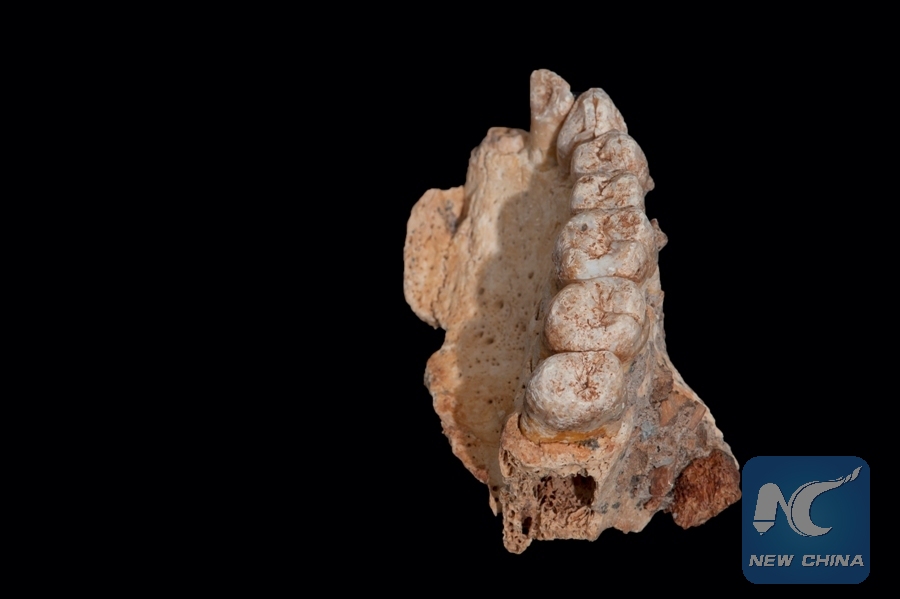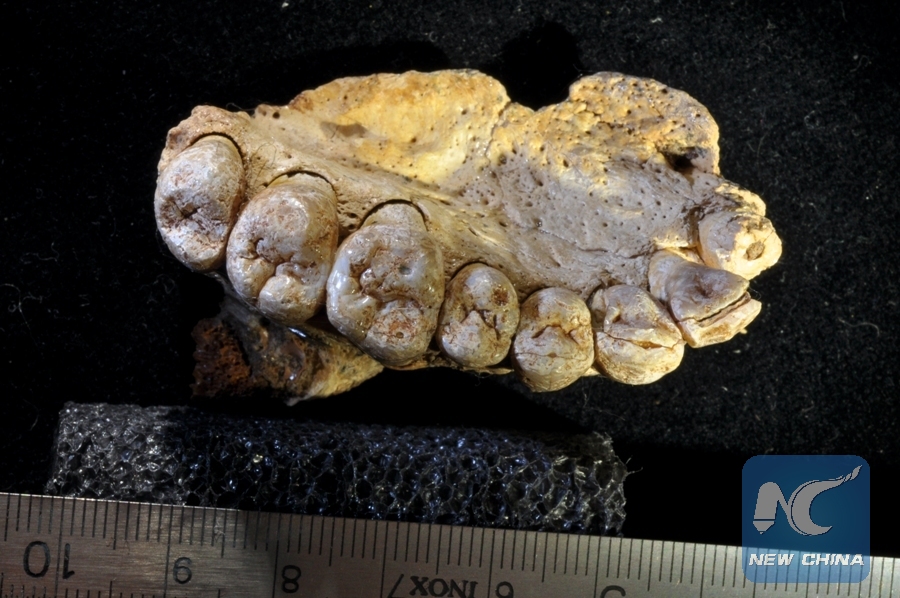
This is the left hemi-maxilla with teeth. (Xinhua/CREDIT: Rolf Quam)
WASHINGTON, Jan. 25 (Xinhua) -- The earliest modern human fossil outside Africa has been found in Israel, pushing back the time humans first left Africa by at least 50,000 years, researchers said Thursday.
The fossil, an upper jawbone with several teeth, was found at a site called Misliya Cave in Israel, one of several prehistoric cave sites located on Mount Carmel, according to a study published in the U.S. journal Science.
Several dating techniques applied to archaeological materials and the fossil itself suggested the jawbone is between 175,000 and 200,000 years old.
Before this discovery, the earliest modern human fossils found outside of Africa were those estimated to be between 90,000 to 120,000 years old.
Study coauthor Rolf Quam, an anthropology professor at the Binghamton University, hailed it as "an exciting discovery."

Close-up view of the of Misliya-1 dentition, showing details of the crown topography and dental features. (Xinhua/Credit: Gerhard Weber, University of Vienna)
"It provides the clearest evidence yet that our ancestors first migrated out of Africa much earlier than we previously believed," Quam said in a statement.
"It also means that modern humans were potentially meeting and interacting during a longer period of time with other archaic human groups, providing more opportunity for cultural and biological exchanges."
The fossil the researchers uncovered, dubbed Misliya-1, exhibits teeth that are in the upper size range of what's seen in modern humans, but that otherwise shows clear patterns and features of our species.
As well, the foramen and aspects of the skull support the classification of the specimen as human.

This is a Misliya cave. (Xinhua/CREDIT: Rolf Quam)
The team noted that Misliya-1 lacks certain unique features of Neandertals and earlier hominin species, such as a low and broad tooth crown.
The archaeological evidence reveals that the inhabitants of Misliya Cave were capable hunters of large game species, controlled the production of fire and were associated with an Early Middle Paleolithic stone tool kit, similar to that found with the earliest modern humans in Africa.
While older fossils of modern humans have been found in Africa, the timing and routes of modern human migration out of Africa are key issues for understanding the evolution of our own species, said the researchers.
The region of the Middle East, they explained, represents a major corridor for hominin migrations during the Pleistocene and has been occupied at different times by both modern humans and Neandertals.
This new discovery opens the door to demographic replacement or genetic admixture with local populations earlier than previously thought, said Quam.
Indeed, the evidence from Misliya is consistent with recent suggestions based on ancient DNA for an earlier migration, prior to 220,000 years ago, of modern humans out of Africa.
Several recent archaeological and fossil discoveries in Asia are also pushing back the first appearance of modern humans in the region and, by implication, the migration out of Africa.

